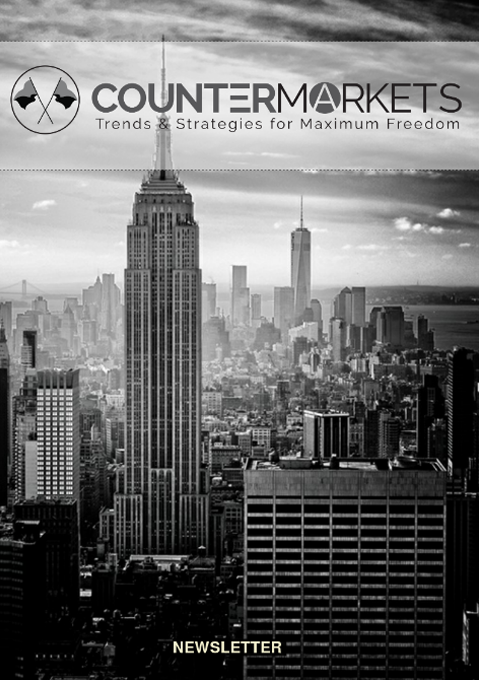Trucking and transportation firms more broadly are both seasonal and cyclical businesses, and some of the earliest signs of damage from the current administration’s trade war with China are beginning to reveal themselves. Traditionally a leading indicator, transportation and shipping data often take two to three quarters to show up in broader national economic statistics. They have the added benefits of being without the anchoring biases that other economic indicators are and, being drawn from disparate sources, cannot easily be manipulated.
While truck, air transport, and maritime shipping activity were brisk in the early stages of the tariff war last summer (2018) — and even referred to as a “boom” at the time — the pace of the downturn over the last six to eight months makes the reasons behind last summer’s improbable surge clear: retailers were hurriedly attempting to stock inventories in advance of additional hostilities or stalled negotiations.
February 2019 saw significant declines in air cargo, and in April it was reported that headcounts at several major trucking companies are being cut. In July the West Coast port of Long Beach reported a nearly 10 percent drop in imports. A recent reading of several indicators verifies the trend: Bank of America–Merrill Lynch’s Truckload Diffusion Indicator depicted an accelerating slide; the shipper comments are, in a word, sobering.
And last month’s extremely detailed Cass Freight Index report summed up the last eight months of increasingly negative developments:
- The “shipments index has gone from ‘warning of a potential slowdown’ to ‘signaling an economic contraction.’”
- “The weakness in … many transportation services, especially trucking … along with airfreight and railroad volume data, strengthens our concerns about the economy and the risk of ongoing trade policy disputes. Weakness in commodity prices … have joined the chorus of signals calling for an economic contraction.”
- All that comes despite the tremendous leaps in supply chain technology and financialization in shipping and transport since World War II — all of which have lead to increased efficiency and better, more timely data. And “since the end of World War II (the period for which we have reliable data) there has never been an economic contraction without there first being a contraction in freight flows.”
The first inversion of the Treasury yield curve (March 2019) was perhaps the earliest indication of recession fears arising from tariff uncertainty. While sometimes dismissed as an esoteric fixed-income market event only distantly related to the “real” economy — goods and services being produced, exchanged, and consumed — it has an immediate bearing on the trucking and shipping slump.
With higher prices owing to retaliatory tariffs, fewer imports are being purchased and/or higher prices are being paid; exports are suffering as well. One implication of such a yield curve inversion is a mounting expectation of a material decline in consumption in the near future: with the economy weaker, it becomes more vulnerable to shocks, and thus both the likelihood and impact of policy action by the Federal Reserve are perceived as heightened within the next 24 months.
If forthcoming, a downturn is unlikely to be substantially mitigated by arm-twisting the Federal Reserve chairman to get him to start a new quantitative easing campaign (the likes of which the president himself once blasted) or by reducing payroll taxes. Nor, it is especially worth mentioning, are policy changes that go through Congress likely to be approved with an election season in the offing.
It should come as little surprise that to the current administration’s ideological opponents, it is not that staving off a possible recession is less important than winning the White House; rather, a recession is instrumental to doing so. But while they will (accurately) be painted as leveraging economic hardship against the American people to marshal votes, the vulnerability is the product of an ill-conceived gamble that the president and a handful of sycophantic economic advisers undertook. To the extent that tariffs are a cause of or accelerant to a pending economic slump, it was the president’s policy choices that exposed him to the policy choices of political nemeses.
None of this indicates that a recession is inevitable, or that revisions won’t change the overall economic picture dramatically. It is increasingly likely, though, that the current administration’s determined embrace of 18th-century trade philosophies is taking a mounting toll on American consumers and businesses.
Peter C. Earle is an economist and writer who joined AIER in 2018 and prior to that spent over 20 years as a trader and analyst in global financial markets on Wall Street. His research focuses on financial markets, monetary issues, and economic history. He has been quoted in the Wall Street Journal, Reuters, NPR, and in numerous other publications. Pete holds an MA in Applied Economics from American University, an MBA (Finance), and a BS in Engineering from the United States Military Academy at West Point. Follow him on Twitter.
This article was sourced from AIER.org
 By
By 